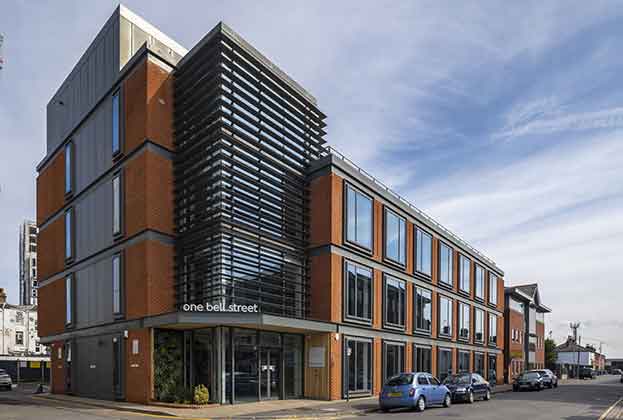In today’s society the productivity and cost merits of an open-plan office environment are well documented as having an overall positive effect on a business by encouraging collaboration, integration and a free-flowing workplace.
As a result, we’ve already seen many occupiers across the UK embracing open-plan space over individual offices. We make the assumption that those companies which most aggressively adopt these attributes will have a competitive advantage in attracting and retaining talent, but is that true of a global law firm?
If you tell a fee-producing lawyer, who’s had a private office for 20 years, that they’ll be moving to be part of an open-plan environment, you might find you lose your top talent. Not only are there the cultural barriers of staff being used to having their own space, but there’s also a huge confidentiality issue with lawyers needing personal space to work through a case.
The current growing law firm merger talks between US and UK firms further accelerates this dilemma. In 2000, the merger between UK firm Clifford Chance and US firm Rogers & Wells was industry noteworthy as it seemingly brought to light some of the cultural challenges an organisation must overcome to successfully integrate attorneys on both sides of the Atlantic.
Almost 20 years later, beyond just Brexit, you can add to that equation the differing physical environments (private office vs open plan) that both are accustomed to as a new management challenge.
There’s no one-size-fits-all solution for law firms – but there are strategies that can be implemented in order to keep talented people happy and limit disruptions to a business’s overall profitability.
Incorporating a variety of different working environments is one approach where open-plan collaborative space for knowledge exchange and interaction is combined with private working areas. We’ve seen this trend already being embraced by regional UK law firms such as Addleshaw Goddard at its 60 Chiswell Street in the City of London office where it’s completely open plan and thriving.
In larger global firms, the tradition of staff having their own office remains a fixed trend, although we’re beginning to see law practices in New York in particular placing first and second year associates into an open-plan format in order to establish this style of working from an early stage of their career, with individual offices kept for senior staff. The smart strategy is to phase open plan into the environment. Younger attorneys and staff that have never known a private office will typically adopt it without a second thought.
The configuration of any office space is key to the success of a business, as its impact of staff productivity and wellbeing is vital, yet it also has to be practical for a company to continue to operate profitably and perform. Striking the balance between different ways of working to allow versatility will be a key component moving forward.
Further information
Contact Savills Occupier Services





.jpg)

.jpg)
.jpg)

(1).jpg)